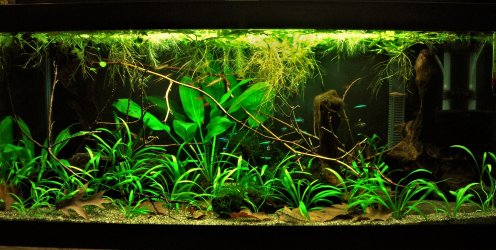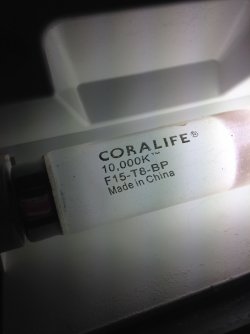I know I posted about my stocking questions just a few topics down but I also have questions on planted aquariums. So, when I decided I wanted fish I did a ton of research on the fish and not much on the plants.. I recieved a tank with all the old gravel substrate and thought the plants would do just fine with it in there... I now wish I would have just replaced the substrate with something more suitable, especially since I have Cory cats that like to dig around.

Here is a pic of my tank as of now! I am dosing the water with Co2, Iron, and plant nutrients but my Corys are sensitive to Co2 dosing so I think it might be better to put new substrate in? Since my tank is all set up it would be a task.. so how would you all go about fixing this problem? Should I start cycling a 10 gallon to transfer the fish to while I work on the big tank? Is there any way at to add substrate to a tank without having to take out water or remove fish? Should I just stick with what I have? (It also might be good to note that I'm on a budget for a while since I spent a lot starting the tank)

Here is a pic of my tank as of now! I am dosing the water with Co2, Iron, and plant nutrients but my Corys are sensitive to Co2 dosing so I think it might be better to put new substrate in? Since my tank is all set up it would be a task.. so how would you all go about fixing this problem? Should I start cycling a 10 gallon to transfer the fish to while I work on the big tank? Is there any way at to add substrate to a tank without having to take out water or remove fish? Should I just stick with what I have? (It also might be good to note that I'm on a budget for a while since I spent a lot starting the tank)






